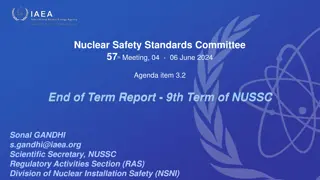FACILITY MANAGEMENT & SAFETY
Facility management and safety are interlinked disciplines crucial for optimizing workflow and ensuring a safe environment in various facilities. This includes managing space, infrastructure, resources, and staff effectively. Specific focus on laboratory facility management involves maintaining quality reports, ensuring staff safety, and protecting the environment. International standards like ISO 15189 emphasize the leadership commitment to safety in laboratory operations. Key aspects of facility management to ensure safety encompass administrative controls, engineering controls, financial outlay, personnel management controls, and work practice controls. Ultimately, everyone shares the responsibility for maintaining quality and safety, with higher management playing a vital role in establishing safety systems, infrastructure development, financial management, safety training provision, and monitoring. Overall administrative duties include meeting manpower requirements, motivating staff, and ensuring resource optimization to prevent risks.
Download Presentation

Please find below an Image/Link to download the presentation.
The content on the website is provided AS IS for your information and personal use only. It may not be sold, licensed, or shared on other websites without obtaining consent from the author.If you encounter any issues during the download, it is possible that the publisher has removed the file from their server.
You are allowed to download the files provided on this website for personal or commercial use, subject to the condition that they are used lawfully. All files are the property of their respective owners.
The content on the website is provided AS IS for your information and personal use only. It may not be sold, licensed, or shared on other websites without obtaining consent from the author.
E N D
Presentation Transcript
FACILITY MANAGEMENT & SAFETY 15189: 5.2
WHAT IS FACILITY MANAGEMENT? Facility Management and Safety are closely related and inseparable Managing Interdisciplinary fields devoted to optimization of workflow and safety in terms of: Space Infrastructure Resources Staff
WHAT IS FACILITY MANAGEMENT OF A LAB? The laboratory workspace and facilities must be such that the work can be performed: Without compromising on the quality of reports Without compromising the safety of Laboratory staff Other health care personnel Patients or the community Environment
MANAGEMENT RESPONSIBILITIES Defined under international standards of Medical laboratories ISO: 15189 and 15190 Calls for continuous engagement of the Higher Management in the laboratory activities Leadership s Commitment and Actions: Leaders must demonstrate a commitment to safety in their decisions and behaviors.
FACILITY MANAGEMENT TO ENSURE SAFETY INVOLVES: Administrative Controls Engineering Controls (Design Control) Financial Outlay Personnel Management Controls Work Practice Controls: Safety Measures
THE CROSSCUTTING ROLE OF MANAGEMENT Engineering Controls Financial Outlay Administrative Controls Safety is essential in every step Work Practice Controls
EVERYONE is responsible for quality and safety
ROLE OF HIGHER MANAGEMENT Overall Administrative Establishment of a Safety System Infrastructure Development Financial Management Provision of Safety Training Monitoring
OVERALL ADMINISTRATIVE Meet overall manpower requirement: To avoid haste and hurry Manpower Motivation Meet resource requirements: To avoid risky practices Ensure optimum use of resources: To avoid waste Liaison with regulatory bodies such as Pollution Control Bodies & AERB, emergency response bodies, disease surveillance bodies such as IDSP & IHR Act and update on the policy changes
ESTABLISHMENT OF A SAFETY SYSTEM Having a safety policy (State/ District/ Facility) Designating safety officers (State/ District/Facility) Having a facility specific safety manual: read and understood Risk assessments Defining safety indicators Monitoring the safety indicators Incident Reporting and Investigations Implementing safety audits and making available the results to higher level management
DESIGN CONTROL Essential to have design control To minimize the error and make the best use of space Lab space to be organised such that tasks can be performed without compromising quality of work, safety of personnel or patient care services Evaluate layout for efficiency , optimal work flow, comfort, privacy, adequate storage space, accommodation for people with disabilities, emergency systems Facilitate through Engineering and administrative controls While designing or re-designing labs, take the help of experts in scientific floor planning
LABORATORY DESIGN Path followed by the sample reception and registration of patients sampling rooms dispatch between different laboratories analysis of samples Report delivery, filing Service rooms
The Hierarchy of Safety Controls Eliminate (Physically remove hazards) Substitute( replace with less hazardous methods) Isolate (Implement barriers between hazards and people) Optimize (Infrastructure optimization for efficiency) Establish Safety Protocols Facilitate Safety Protocols Follow Safety Protocols
PROVIDING SAFETY; SOME KEY POINTS Bio-Safety Safe Phlebotomy Equipment, sharps management Personal Protective Equipment Vaccinations Post Exposure Prophylaxis First Aid Bio-Medical Waste Management Water, Sanitation and Hygiene Provision for Environment Cleaning Hand Hygiene Equipment Decontamination
PROVIDING SAFETY; SOME KEY POINTS Fire-safety Chemical Safety Equipment Safety Electrical Safety Glassware Safety
FINANCIAL OUTLAY Considering occupational safety (Employee, User, Environment) as an integral need while budget planning Funds for contingencies in outbreaks or other emergency situations Funds for regular safety mechanisms Sanction of laboratory specific funds?























